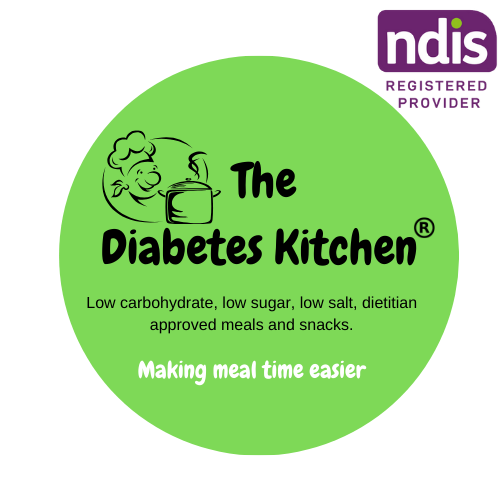Why Dried Fruits Are a Poor Choice for Diabetics — And Which Fresh Fruits Are High in Sugar
When you're managing type 2 diabetes or prediabetes, watching your sugar intake is essential. While fruits can be part of a healthy, balanced diet, not all fruits are created equal—especially when it comes to their effect on blood glucose levels.
One group of foods that often causes confusion is dried fruit. Many people assume that because dried fruit comes from fresh fruit, it must be healthy. But for people with diabetes, dried fruits can be a hidden sugar trap, leading to rapid blood sugar spikes and difficulty with blood sugar control.
In this article, we’ll explore why dried fruits are generally a poor choice for diabetics, and we’ll also look at which fresh fruits are naturally high in sugar so you can make more informed choices.
🛑 Why Dried Fruit is Problematic for People with Diabetes
1. Concentrated Sugar Content
The drying process removes water from fruit, but the natural sugars remain. This makes dried fruit extremely concentrated in sugar and carbohydrates. For example:
-
1 cup of grapes: ~27 grams of sugar
-
1 cup of raisins (dried grapes): over 100 grams of sugar
This massive jump happens because dried fruit is much more compact, and it's easy to eat a large quantity in a short amount of time—without realising how much sugar you're consuming.
2. Portion Distortion
Fresh fruit is naturally bulky and filling due to its water content. Dried fruit, on the other hand, is smaller and easy to overeat. Just a small handful of dried apricots, dates, or sultanas can equal the sugar content of multiple pieces of fresh fruit. This can cause unexpected blood sugar spikes.
3. Often Contain Added Sugar
Many dried fruits—especially those sold in supermarkets—contain added sugar, syrups, or preservatives to enhance flavour and shelf life. Sweetened cranberries, dried mango, and dried banana chips are common examples. These added sugars only increase the glycaemic load, making them even more problematic for people with diabetes.
4. Low Fiber Retention
While some dried fruits retain their fiber, others lose a significant portion during processing. Fibre plays a vital role in slowing down the absorption of sugar, and when it’s reduced, the sugar from dried fruit hits your bloodstream more quickly.
🍇 Dried Fruits to Avoid if You’re Diabetic
While it’s best to avoid or strictly limit dried fruits if you have diabetes, here are some of the most high-risk options:
-
Raisins
-
Dates
-
Dried apricots
-
Dried mango
-
Banana chips
-
Sweetened cranberries
-
Figs (dried)
Even small servings of these can spike blood sugar significantly. If you really want to include dried fruit, always check labels and aim for unsweetened varieties in very small portions—and always pair with a protein or healthy fat to help slow sugar absorption.
🍎 High-Sugar Fresh Fruits to Watch Out For
Not all fresh fruit is blood sugar-friendly either. While whole fruit is still better than dried, some fresh fruits contain higher natural sugar levels, especially in large servings.
Here are some fresh fruits high in sugar per typical serving:
-
Mango – 45g of sugar per fruit
-
Grapes – ~23g per cup
-
Cherries – ~18g per cup
-
Bananas – ~14g per medium banana
-
Pineapple – ~16g per cup
-
Figs (fresh) – ~8g per fig
-
Lychees – ~29g per cup
-
Pomegranates – ~39g per fruit
These fruits are still natural and nutritious, but for people with diabetes, they should be consumed in moderation and preferably paired with a fat or protein source to reduce their glycaemic impact.
✅ Better Fruit Choices for Blood Sugar Control
If you have diabetes, opt for fruits that are lower on the glycaemic index and higher in fibre. These include:
-
Berries (blueberries, strawberries, raspberries)
-
Apples (small, with skin)
-
Kiwi
-
Oranges (whole, not juice)
-
Plums
-
Avocado (yes, technically a fruit!)
These fruits tend to cause smaller blood sugar increases and provide vitamins, antioxidants, and fibre—key nutrients for people managing diabetes.
💡 Final Tips for Managing Fruit on a Diabetic Diet
-
Portion size is key – Even healthy fruit can spike blood sugar if you eat too much. Stick to one serving at a time.
-
Choose whole fruits over juices or dried options—these have more fibre and lower sugar density.
-
Pair fruit with protein or fat – Try apple slices with peanut butter or berries with Greek yoghurt.
-
Monitor your response – Everyone’s body reacts differently. Use a blood glucose monitor to see how specific fruits affect you.
🧾 Conclusion
While fruit is often seen as a healthy staple, not all fruits are equal when it comes to diabetes management. Dried fruits are especially risky due to their high sugar concentration, small portion size, and tendency to include added sugars. Meanwhile, certain fresh fruits are naturally high in sugar and should be consumed in controlled portions.
The key is to choose wisely, read labels, control portions, and listen to your body. With smart choices, you can still enjoy the benefits of fruit—without putting your blood sugar on a rollercoaster.
👉 Need diabetes-friendly meal options with no added sugar and smart carb control? Explore our ready-made diabetic meal plans at The Diabetes Kitchen today.





